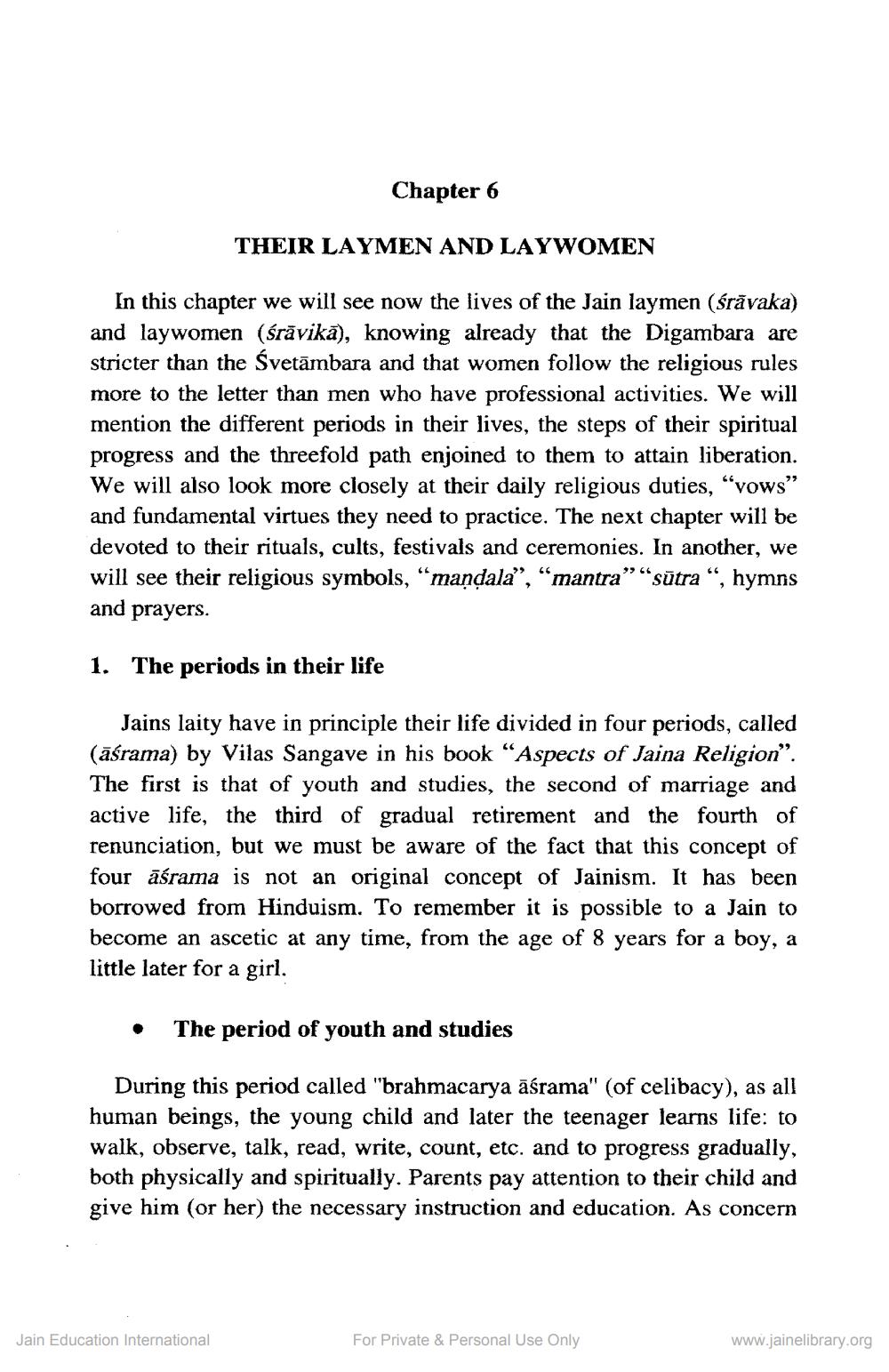________________
Chapter 6
THEIR LAYMEN AND LAYWOMEN
In this chapter we will see now the lives of the Jain laymen (śrāvaka) and laywomen (śrāvikā), knowing already that the Digambara are stricter than the Svetambara and that women follow the religious rules more to the letter than men who have professional activities. We will mention the different periods in their lives, the steps of their spiritual progress and the threefold path enjoined to them to attain liberation. We will also look more closely at their daily religious duties, "vows" and fundamental virtues they need to practice. The next chapter will be devoted to their rituals, cults, festivals and ceremonies. In another, we will see their religious symbols, "mandala", "mantra' 'sūtra ", hymns and prayers.
1. The periods in their life
Jains laity have in principle their life divided in four periods, called (aśrama) by Vilas Sangave in his book "Aspects of Jaina Religion". The first is that of youth and studies, the second of marriage and active life, the third of gradual retirement and the fourth of renunciation, but we must be aware of the fact that this concept of four āśrama is not an original concept of Jainism. It has been borrowed from Hinduism. To remember it is possible to a Jain to become an ascetic at any time, from the age of 8 years for a boy, a little later for a girl.
Jain Education International
• The period of youth and studies
During this period called "brahmacarya āśrama" (of celibacy), as all human beings, the young child and later the teenager learns life: to walk, observe, talk, read, write, count, etc. and to progress gradually, both physically and spiritually. Parents pay attention to their child and give him (or her) the necessary instruction and education. As concern
99 66
For Private & Personal Use Only
www.jainelibrary.org




